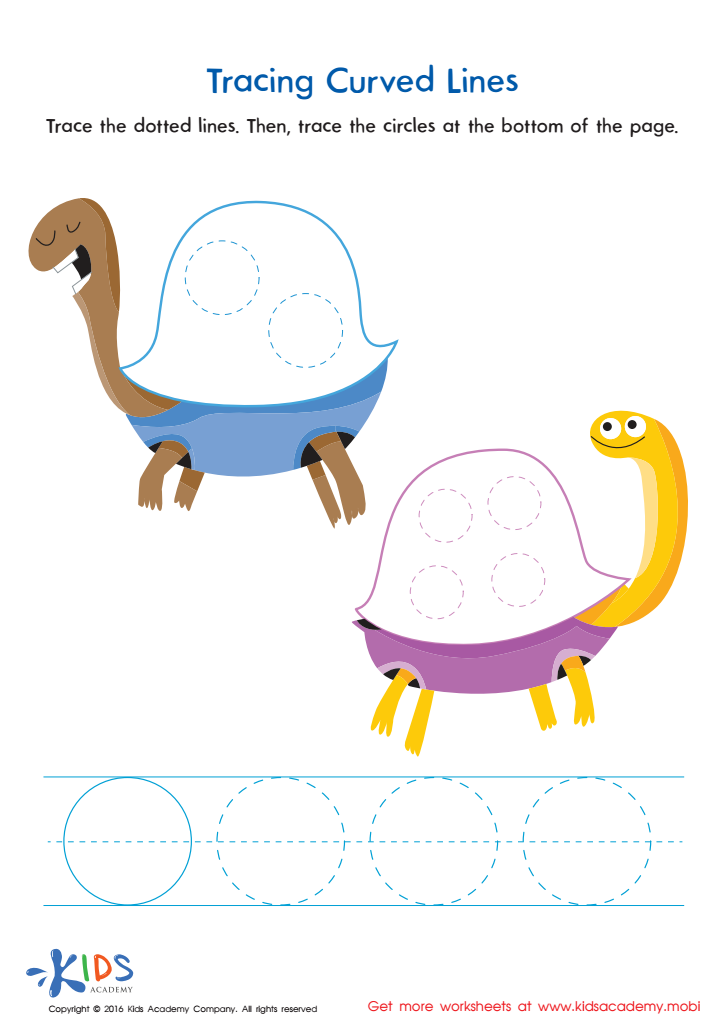Normal Tracing Lines and Curves Worksheets for Ages 3-6
5 filtered results
-
From - To
Discover our engaging Normal Tracing Lines and Curves Worksheets designed for children aged 3-6! These worksheets are an excellent resource for young learners to enhance their fine motor skills and handwriting abilities. Through colorful and captivating activities, kids will practice tracing straight lines and curves, laying a solid foundation for early writing skills. Each worksheet is thoughtfully crafted to keep children motivated while learning essential pre-writing techniques. Parents and educators will appreciate the ease of use and the fun-filled learning experience these worksheets bring. Explore our collection and watch your child's confidence soar as they master tracing with joy!
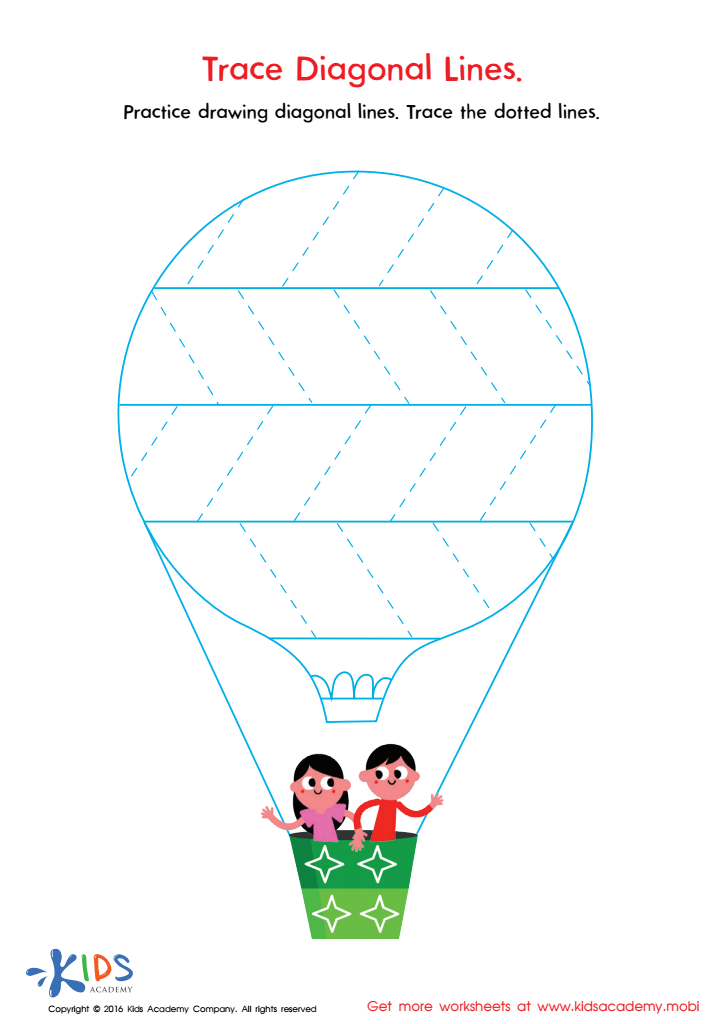

Trace Diagonal Lines Worksheet
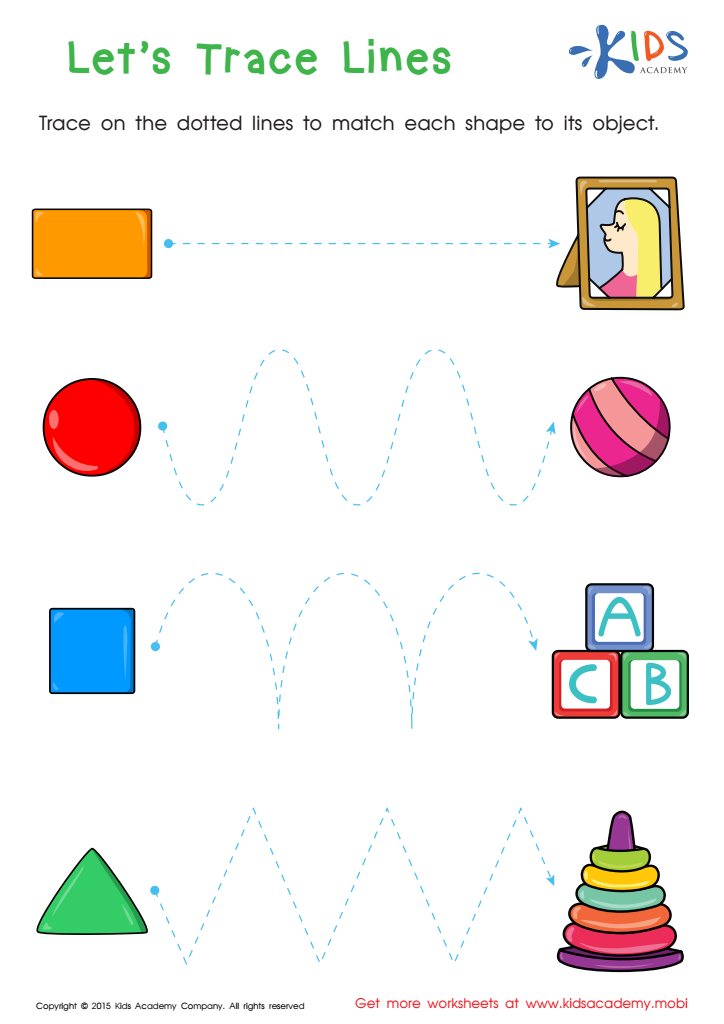

First Words: Let's Trace Lines Worksheet
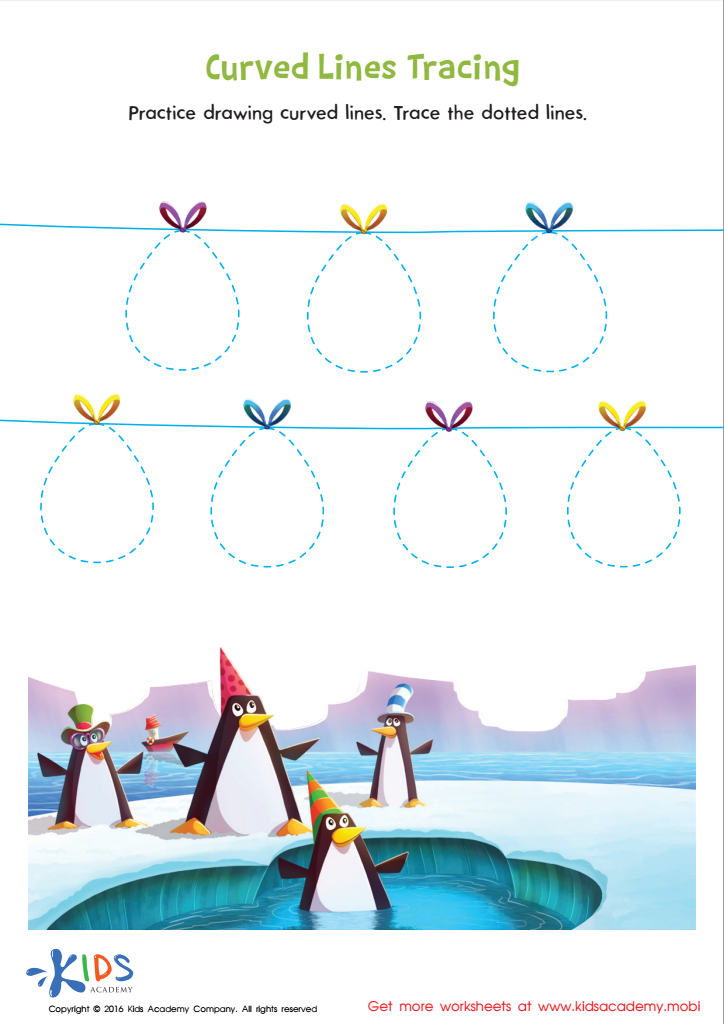

Curved Lines Tracing Worksheet
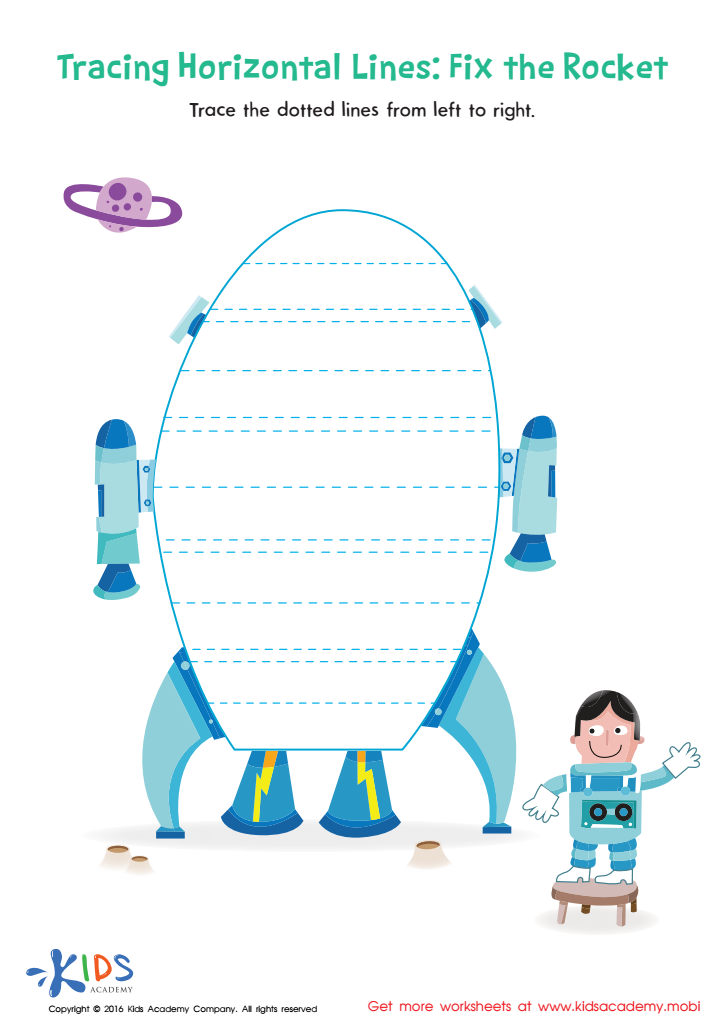

Tracing Horizontal Lines Worksheet
Normal Tracing Lines and Curves are fundamental in early childhood development, particularly for children aged 3-6. Parents and teachers should prioritize them as they foster essential motor skills crucial for a child's overall development. Engaging in tracing activities enhances fine motor skills, which are vital for tasks like writing, drawing, and self-care activities, ultimately contributing to better handwriting as children advance in school.
Moreover, tracing introduces children to the concepts of shapes and directional movements, laying the groundwork for early mathematical and spatial understanding. Children learn to recognize patterns and develop hand-eye coordination, both of which are imperative for later learning.
Additionally, tracing activities promote focus and concentration, allowing children to practice patience and persistence while working on a task. This also boosts their confidence as they see their progress and skills improve.
Finally, it's an enjoyable and engaging way to bond between parents, teachers, and children, allowing for creative expression and cognitive challenges. By investing time in these activities, parents and educators not only facilitate essential skill development but also create a positive and supportive learning atmosphere, making early education rich and impactful.
 Assign to My Students
Assign to My Students

